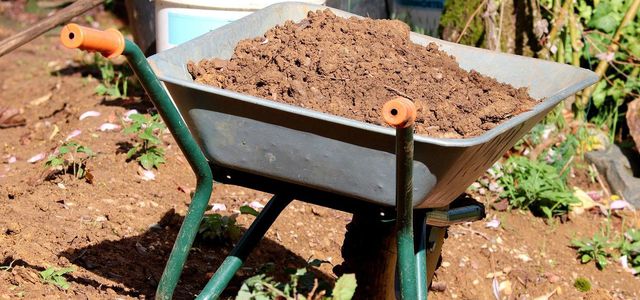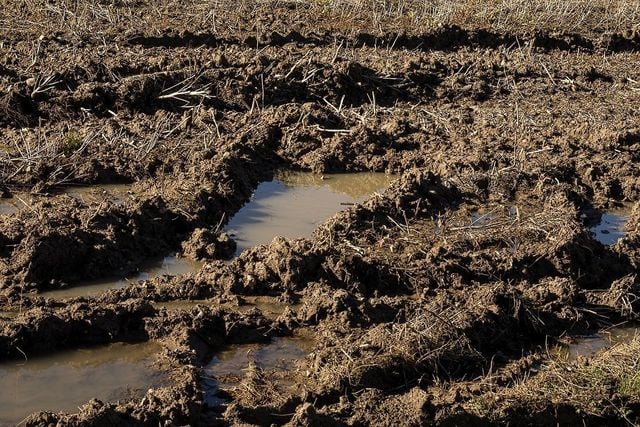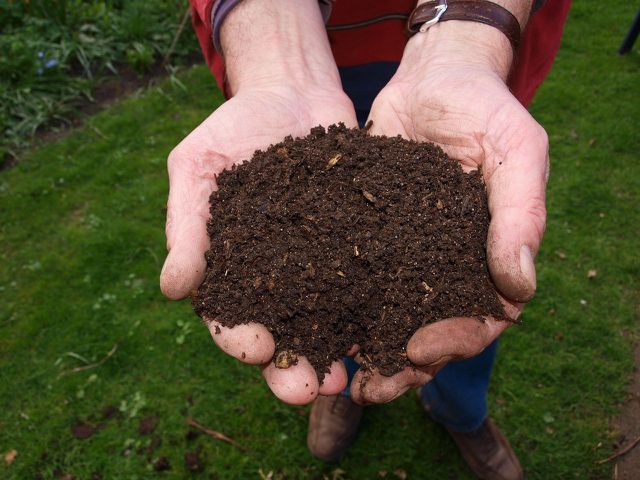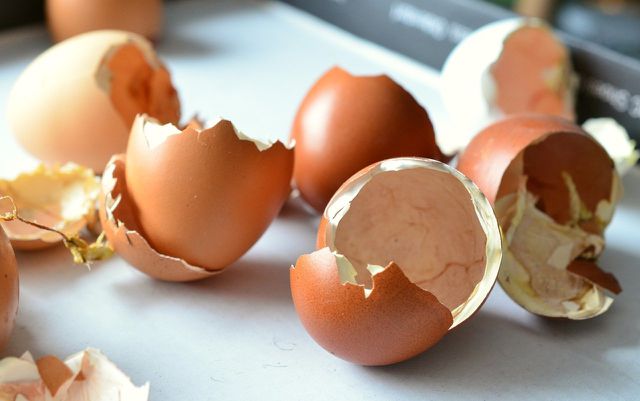
Soil improvement is necessary when plants no longer grow properly. Even with simple means, you can improve the soil quality sustainably. We show you what is important for the different soils.
Not all soils offer ideal growing conditions for plants. That’s why it’s sometimes necessary to improve your garden soil yourself. After all, plants can only thrive and produce a bountiful harvest in fertile soil. But what exactly is a good soil?
On the one hand, a good soil should be fine-textured and permeable to air, but on the other hand, it should also be able to store sufficient water and nutrients. Whether these criteria are met depends largely on the soil structure – that is, the composition of the various soil components such as sand, loam, clay and humus. The soil structure is determined by the size of the soil pores. Soil pores are small cavities in the soil into which air and water can enter. Concrete measures for soil improvement always depend on how the soil is structured. Therefore, you must first determine what type of soil it is.
Contents
- 1 How to determine the soil type
- 2 1 soil improvement depending on the type of soil
- 3 2 soil improvement through intact humus management
- 4 3 soil improvement through green manuring
- 5 4 soil improvement through regulated pH-values
- 6 5 soil improvement through natural fertilizers.
- 7 6 soil improvement with the help of mixed crops
- 8 Author
How to determine the soil type

You can easily examine the composition of the soil yourself. Squeeze some moist soil into a ball and try to form a sausage out of it. If the soil crumbles and falls apart again, it is a soil with a high sand content. If the soil is easily moldable, smooth and does not stick to your hands, you have a mixture of clay and sand soil. If the soil holds together well but sticks to the hands, it is particularly loamy or clayey. Another indication of clayey soil is the shiny surface that results when you smooth the ball.
Sandy soils have coarse soil particles. The soil pores are larger, allowing water to drain quickly and then leaving air in the soil pores. This is why they are also called light soils. The advantage is that you can easily work them all year round. However, sandy soils have limited ability to store water and nutrients and dry out quickly.
Silty soils are much finer-grained and water can only percolate slowly. For this reason, the pores here store both water and air.
Clay soils have the smallest grain size. Due to the very small soil pores, they store a lot of water. This increases the risk of waterlogging and the soil is poorly aerated. The result is heavy and dense soils.
Ideal for the garden is a mixture of clay and sandy soil.
1 soil improvement depending on the type of soil

Light sandy soils:
Sandy soils dry out quickly in the summer and can’t retain enough water and nutrients. You can improve the soil structure with clay minerals that store water better. Bentonite, perlite or rock flour are just a few examples.
In addition, you can enrich the soil with compost or other organic material in spring. Green manure is also suitable for soil improvement. These agents support the formation of humus, which can store large amounts of water and nutrients. Mulching also improves soil properties by reducing water evaporation and allowing the organic material to provide nutrients.
Heavy clay or loam soils:
Here, there is a risk that the soil will retain a lot of water (risk of waterlogging) and there is little aeration of the soil. In spring, heavy soils are slow to heat up, which is why plants develop late. To loosen the soil, you should dig it up in the fall before the first frost. The onset of frost causes the water in the dug-up clods of soil to freeze and expand. In this way, the clods of soil are “blasted” – this is called frost proofing. Even in the warm months you should always loosen the soil.
In addition, you can work compost or sand into heavy soils to improve the soil. Green manures loosen the soil through their roots and also ensure better aeration. Deep-rooted plants are particularly suitable for green manuring.
2 soil improvement through intact humus management

In addition to the basic composition, one thing in particular is crucial in soil fertility: the humus content. Humus is an important storehouse for water and nutrients. You can support humus management in the following ways:
Incorporate humus: The quickest way to enrich your soil and make it more fertile is with purchased humus. However, conventional humus soil can be contaminated with synthetic pollutants and contain other pests such as fungi or weed seeds. When buying, you should therefore look for organic quality or, even better, compost yourself. Read more here: Create compost: Fertilizer for the garden from the composter.
Build up humus: Organic materials such as plant residues or manure promote the accumulation of humus and thus contribute to soil improvement. A protective layer of mulch also helps soil organisms build up humus.
Tip: Earthworms are valuable helpers for a good soil structure. They loosen the soil and help with composting. You can improve the soil in your garden by breeding earthworms yourself.
3 soil improvement through green manuring
Soils benefit from not lying fallow for long periods of time. Plants root through the soil and make it loose. Green manuring not only provides the soil with nutrients, it also benefits the soil structure in particular. Planted soils are better protected against erosion, drying out and weeds. They also stimulate humus formation and are a source of food for insects, which helps maintain biodiversity. Even mowed down, green manures are still useful because the plants are incorporated into the soil, where they help build humus.
Popular green manure crops include legumes such as lupines, peas, oil radish, and various clover varieties. Yellow mustard, sunflowers, phacelia or buckwheat are also good for soil improvement.
The different green manures bring partly different effects. Lupins, peas and alfalfa, for example, can bind a lot of nitrogen from the air and release it into the soil. Other plants are valued because their particularly deep roots loosen the soil. Depending on which soil properties you want to improve, you should find out in advance how the various green manures work.
4 soil improvement through regulated pH-values

You can also help improve the soil by regulating the pH. Most plants feel comfortable at pH values between 5.5 and 7.0. If the pH is too low, the soil is too acidic. The plants can then absorb nutrients less easily. If the pH is below 5.5, you should lime the soil in spring. This can be done, for example, with the help of crushed eggshells. You should check the lime content once a year and enrich it with lime if necessary. You should adjust the amount of lime to the measured pH value and the respective plants.
If the pH-value is too high, the soil is strongly alkaline, which means that less humus accumulates. However, soils with too much lime are rather rare.
5 soil improvement through natural fertilizers.

You can use numerous home remedies as natural fertilizers to improve the soil:
Compost: Biological waste accumulates in every household. You can collect this in a compost heap and, when the waste has decomposed, work it into the soil as organic fertilizer. By the way: composting is also possible without a garden – in the form of a homemade worm bin or a compost on the balcony. The compost loosens heavy soils and helps sandy soils retain water and nutrients better.
Coffee grounds: coffee provides the soil with important minerals and nitrogen. To prevent coffee grounds from becoming moldy, you should dry them first. To do this, you can lay it out on a baking tray, for example. Then work the coffee grounds into the soil.
Nettle manure: Nettle manure is a popular natural fertilizer that provides nitrogen and potassium to the soil and plants. It is also popular for pest control against aphids. You can make your own nettle liquid manure with very little effort.
By the way: Mineral fertilizers increase soil fertility in the short term, but are unsuitable as a means for sustainable soil improvement. It is true that they quickly provide nutrients that drive plant growth. However, the formation of humus is not stimulated and the soil structure does not benefit from mineral fertilizers either.
6 soil improvement with the help of mixed crops
Soils benefit from varied crop rotations. If you grow the same or similar species too often, the soil will eventually lose fertility. Diverse planting ensures that nutrients and minerals are not drawn from the soil in a one-sided manner.

